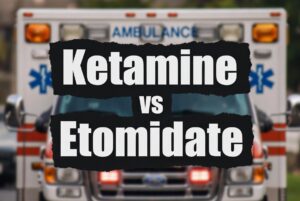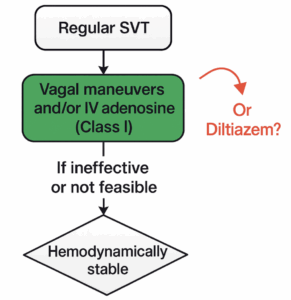EMS Perspectives: An OpEd Page on the History and Future of EMS
Authors: David Wright, PA-C, NRP, FAEMS; Kate Randolph, PA-S; Kim King, FNP
Introduction
Mental health and wellness are on the forefront of everyone\’s minds these days, and the past few years have been an exceptionally challenging time for healthcare workers around the world. During a time when EMS systems were already understaffed and overworked, COVID decided to make an appearance. The world became unsure of what was to come with this new virus, seemingly creating a plethora of sick patients, with no real treatment in sight. Then the explosion of EMS calls across the nation. Throughout this time, we never stopped serving our residents, our neighbors, our communities. If 911 was called, we responded. But did we ever stop to consider the harm that we were experiencing, even without getting physically ill.
Frequently, EMS clinicians face extremely stressful situations that other clinicians may never even fathom to experience in their careers. These situations can be anything, from the 17th sick case of the day to a mother running at you crying with her dying infant in their arms. These stressors are real and cause long term consequences to those that serve. In this post, we are looking at some situations that frequently cause an increase in provider stress and burnout. We will also look at some possible predictors of burnout that leaves our coworkers with a higher affinity for negative mental health experiences and burnout.
Call it EMS bingo… call them extreme calls… whatever you call it, we all have a list of calls we never want to run. Pediatric cardiac arrests, Mass Casualty Incidents, building collapses, death notifications, entangled patients, suicides, homicides, critical pediatric calls, the list goes on and on. Everyone is impacted by these high stress, critical calls, but most people don’t know it immediately. Eventually these stressors surface either as mental, physical, or emotional distress.
Stress and Burnout
Occupational stress is known to lead to multiple adverse health effects including psychological disorders, cardiovascular disease, GI complications, weakened immune system and specific disorders such as hypertension, obesity, stroke, and diabetes. (Hashmi, 2015) Post-traumatic stress disorder (PTSD) can also contribute to high rates of suicide, job-related burnout, clinical depression, and can manifest in physical conditions resulting in EMS clinicians no longer being able to perform their jobs. (Mountfort & Wilson, 2022)
Burnout among EMS providers has been linked to higher absenteeism and turnover which eventually will lead to a shortage of healthy, trained EMS professionals. A study was performed evaluating the relationship between burnout and job-related demands/resources among emergency medical services (EMS) professionals (Crowe, 2020). EMS professionals facing high job demands and low job resources demonstrated significantly higher odds of burnout. Within this study, an initiative to improve coping mechanisms was addressed, but often this places the responsibility on the victim. Of all the challenges that EMS clinicians face, being under constant pressure to make vital clinical decisions and perform lifesaving interventions creates the strongest impact on burnout.
As EMS professionals, exposure to various occupational hazards, such as exposure to death, grief, and injury, is part of their daily routine. Increased stress and burnout were also noted in those who perform death notification, with an increase in burnout every time notification was made. (Campos et al) Facing highly stressful and critical situations is one of the core risk factors for EMS. EMS personnel have been identified to be at a higher risk of suicide than the general population with 6.6% of Fire/EMS professionals reporting a suicide attempt in comparison to 0.5% of the general population (SAMHSA, 2018).
EMS professionals often perceive high levels of emotional exhaustion and depersonalization with low levels of personal achievement. In one study, frequently reported coping strategies included talking with colleagues (87.4%), looking forward to being off duty (82.6%), and thinking about the positive benefits of work (81.1%). (Almutairi & Mahalli, 2020) Targeted training and feedback has the potential to negate a portion of these negative effects experienced by clinicians. (Crowe RP et al) While this can be beneficial for some, it is not the solution to all stress and burnout related problems presented.
One concept that must be considered is that of repetitive trauma. Providing focused education and resources to our emergency medicine prehospital providers on this topic is something that is seldom performed in many regions. (Jahnke, 2016) While single traumatic events can be impactful, singular events are commonly manageable. Persistent exposure to multiple traumatic events can lead to increased risk of mental health disorders, including PTSD, insomnia, among others. (Do et al., 2019) Compounded over a 20-30 year career, it is almost inevitable that EMS clinicians will be exposed to repetitive trauma.
Looking for Solutions
In an ideal world, EMS leadership (supervisors, command staff or medical directors) would be able to identify specific calls that predispose EMTs and paramedics to increased risk of stress and burnout, but it is understood that this is a difficult, multi-faceted task.
While there is no currently identified list of critical calls that will definitively effect EMTs and paramedics, it is reasonable to note that commonly stressful situations such as death notification, critical pediatric calls (including cardiac arrests), mass casualty incidents, suicides/homicides and incidents involving other public safety workers are a potential starting point. As leaders in the EMS field, it is our responsibility to start looking out for our own. Leaders should be looking at crews that run these high stress calls and performing targeted intervention in an attempt to decrease the long-term impact of these types of calls. While the gold standard of intervention has yet to be identified, it may include debrief, discussion, and support provided in a safe, judgment-free environment.
Resources
Almutairi, M. N., & El Mahalli, A. A. (2020). Burnout and Coping Methods among Emergency Medical Services Professionals. Journal of multidisciplinary healthcare, 13, 271–279. https://doi.org/10.2147/JMDH.S244303
Campos, A., Ernest, E. V., Cash, R. E., Rivard, M. K., Panchal, A. R., Clemency, B. M., Swor, R. A., & Crowe, R. P. (2021). The Association of Death Notification and Related Training with Burnout among Emergency Medical Services Professionals. Prehospital emergency care, 25(4), 539–548. https://doi.org/10.1080/10903127.2020.1785599
Crowe RP, Fernandez AR, Pepe PE, Cash RE, Rivard MK, Wronski R, Anderson SE, Hogan TH, Andridge RR, Panchal AR, Ferketich AK. The association of job demands and resources with burnout among emergency medical services professionals. J Am Coll Emerg Physicians Open. 2020 Jan 27;1(1):6-16. doi: 10.1002/emp2.12014. PMID: 33000008; PMCID: PMC7493511.
Do, T. T. H., Correa-Velez, I., & Dunne, M. P. (2019). Trauma Exposure and Mental Health Problems Among Adults in Central Vietnam: A Randomized Cross-Sectional Survey. Frontiers in psychiatry, 10, 31. https://doi.org/10.3389/fpsyt.2019.00031
Hashmi, Muhammad. (2015). Causes and Prevention of Occupational Stress. IOSR Journal of Dental and Medical Sciences. 14. 98-104. 10.9790/0853-1411898104.
Jahnke, Sara A. et al. ‘Firefighting and Mental Health: Experiences of Repeated Exposure to Trauma’. 1 Jan. 2016 : 737 – 744.
Mountfort, S., & Wilson, J. (2022). EMS Provider Health And Wellness. In StatPearls. StatPearls Publishing.
SAMHSA.First Responders: Behavioral Health Concerns, Emergency Response, and …May 2018, https://cectresourcelibrary.info/wp-content/uploads/2021/07/First-Responders_-Behavioral-Health-Concerns-Emergency-Response-and-Trauma.pdf.
Editing by EMS MEd Editor James Li, MD



